Computers I Have Known
Originally published on: Sat, 22 May 2010
The first computer in my household was a Radio Shack TRS-80 pocket computer that my dad owned. My brother got it for him as a birthday gift in 1980.

This was essentially a calculator with a pretty nifty BASIC interpreter built in. The BASIC was not without its own personality. Although it supported arrays, I found that if I DIM’ed an array “A” and placed a value in A(2) … variable “B” would get clobbered. The array space seem to overlap with the standard variables.
I was just learning BASIC at the time, so the pocket computer was good to have around. I built a couple of awful games. I remember that the book that came with the little computer had a formula for p-random number generation as the RND() function didn’t exist in the BASIC.
The computer that I lusted after in 1981 was the new TRS-80 Color Computer (CoCo). I was so certain that I was going to be able to scrape up enough money to buy one that I bought the book Going Ahead with Extended Color BASIC by Jon Erickson. Years later, Jon would be the editor of the venerable programming magazine Dr. Dobbs Journal. He was my point-of-contact when I wrote a couple of freelance articles for DDJ.
Although I didn’t end up getting the CoCo back then, I picked up a CoCo 2 in a thrift store for $2.95 in 2006 ( with 16K and Extended Color BASIC ).
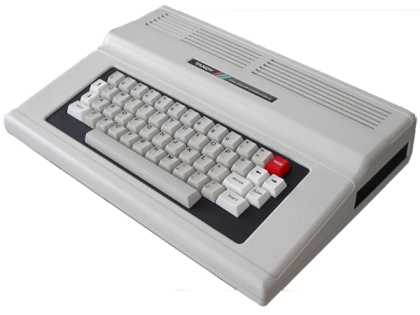
In late 1982, my parents bought me a used TRS-80 Model I.
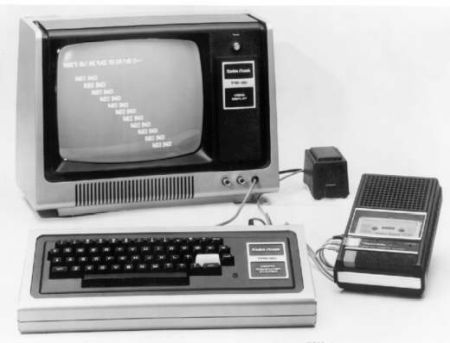
Mine had 16K with Level II BASIC. My brother gave me the Radio Shack Editor-Assembler and a book, so I learned Z-80 assembly-language on this computer. It was a great little machine. My only complaint was that saving to cassette was heavily unreliable.
At school, I was able to use Apple II+ and Apple IIe computers.
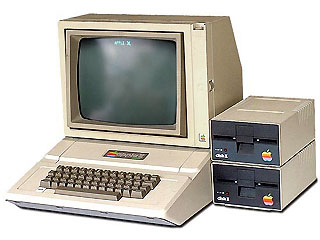
I did my first hand-assembly of 6502 code in late 1983. I began using the mini-assembler from the Integer BASIC ROM to write 6502 code.
A friend of mine received a Timex / Sinclair 1000 with the default 2K of memory as a Christmas gift. I found the BASIC cumbersome to use because of having to hit a single key to get a BASIC token to show up on the screen. It rendered any typing skills useless. I’m sure that once one became familiar with the keys, they could probably type BASIC code in very quickly.
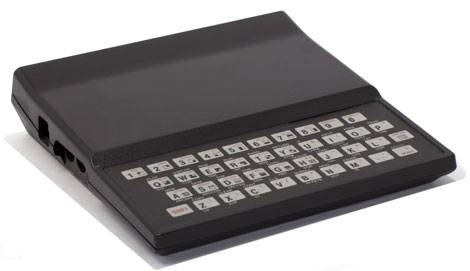
In early 1984, I was in an independent-study class where I was able to use the Commodore 64 computer.

I was amazed at all of the features the machine sported for such a low price. Right after graduating high-school in 1984, I bought one with a 1541 disk drive. Later that Fall, I picked up a 300 baud “dumb” VicModem.
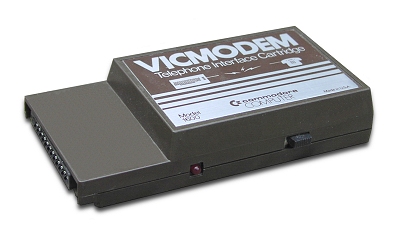
I began using electronic bulletin-board systems (BBS’s ) at this time. That hobby really didn’t go away until the mid-90’s when Internet access became available.
Some of the other items I owned included:
- 1525 printer
- Datasette
- CP/M cartridge
- Epyx Fast Load cartridge
- Westridge 300 baud pulse-dial modem
- Atari Joysticks
- Wizard of Wor (game) on cartridge
Books I owned included:
- Compute!’s Second Book of Commodore 64
- Compute!’s Third Book of Commodore 64
- Compute!’s Second Book of Machine Language
- Inside Commodore DOS ( I have another copy of this book, now. Great book!
- Compute!’s Guide to Adventure Games ( not sure about the exact title. I still have the book.
- The CP/M Handbook with MP/M by Rodnay Zaks
- The C64 Programmer’s Reference Guide
- One other CP/M book … I forget the title
Of course, I subscribed to Compute!’s Gazette magazine and regularly picked up Compute!, Ahoy, Commodore User, Run, and The Transactor as well as Byte magazine.
BASIC and 6510 (6502) assembly-language were the languages I used heavily on this computer. I also dabbled in Pascal, Forth, and several extended BASIC implementations.
I’m pretty sure it was 1985 when I upgraded to the new Commodore 128 computer.
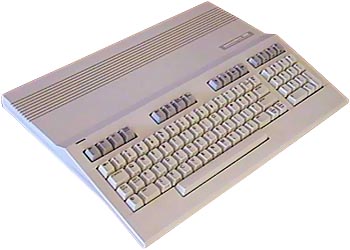
The C128 could pretty much emulate a C64, but it also had a much better implementation of CP/M, and a native 128 mode that included a better BASIC and a built-in machine-language monitor. I traded my old C64 and 1541 for a 1571 drive. I bought a 1200-baud “dumb” modem that made BBS-ing a lot more fun.
I first used Turbo Pascal in CP/M mode on this machine.
If you entered the command SYS 32800,123,45,6 you’d see the following “Easter egg” screen:
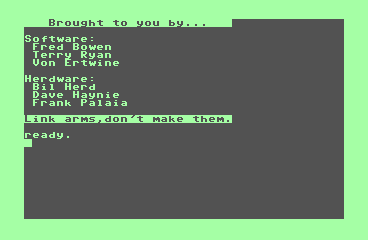
I also picked up the books The Commodore 128 Programmer’s Reference Guide and a Compute! C128 book to my collection.
I bought a used Apple monochrome composite monitor and cobbled together a video cable for it. I was finally able to use nice-looking 80-column text on a computer.
I picked up a Commodore Plus-4 at a warehouse outlet for about $60 in 1986 or 1987.
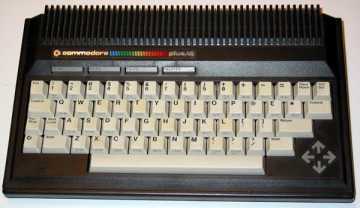
It really wasn’t much to write home about as it was not compatible with most of the other hardware I had.
In 1987, I sold all of my Commodore 8-bit gear ( including the Plus-4 and all books ) to a buddy of mine. I bought a Commodore Amiga 500 and 1200-baud Amiga “smart” modem ( Hayes-like command-set ). I kept the Apple monitor and used it with the Amiga.
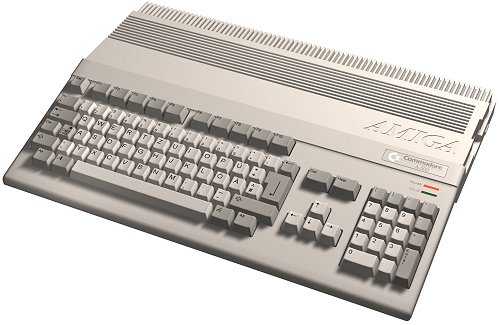
I used the enhanced AmigaBASIC and dabbled a bit with C, but didn’t keep the computer for very long. I sold the computer, but kept the modem as it was also compatible with the XT clones of the day.
I pored over each issue of The Computer Shopper with the intent to buy a cheap XT clone, but didn’t get around to that until a while later.
So that I could keep active in the BBS community, I bought a Commodore VIC-20 with another Vicmodem and datasette for about $25. I quickly found that 22 columns wasn’t optimal for using modern BBS’s, but it was better than nothing.
I picked up the Vic-20 Programmer’s Reference guide as I was hand-assembling my own little terminal software for this computer and needed some reference information. I was amazed that Waldenbooks still carried a copy of this book. I still have it.

At work, I was now writing C and 8086 assembly code on Intel / MS-DOS machines. I soon picked up the first in a long line of Intel-based computers.
Nowadays, In addition to a few Windows / Linux computers, I only own Dad’s old pocket computer, and have a joystick that is essentially a functional Commodore 64 that was produced several years ago. I don’t have any other vintage items except for a growing book collection. I often spend time using emulators to try to recapture the fun I had using those old machines.
A few years after I posted the above, a gentleman named Jacques Matteij posted a similar blog post with the same title. It’s worth reading.